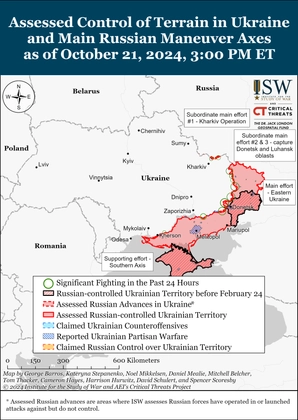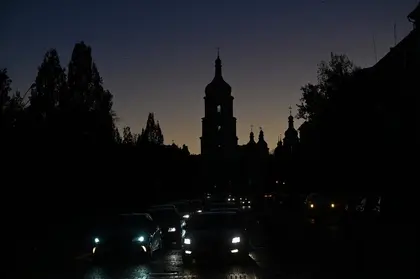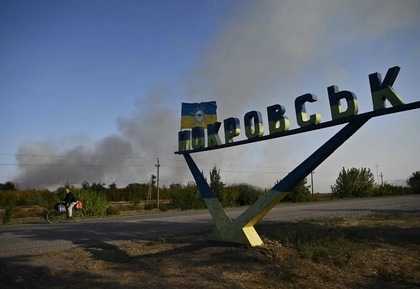The morning of Oct. 10, probably like the morning of Feb. 24, Ukrainians will remember forever. Eighty-four cruise missiles and 24 drones. Almost the entire territory of Ukraine came under attack, and critical infrastructure facilities were targeted. However, some of the rockets "landed" in the center of the city, for example, near Taras Shevchenko University in Kyiv, or on a playground, taking with them the lives of people who had just woken up and were preparing for a new day. The air raid alarm sounded several times throughout the day. And in the evening, Ukraine, some parts more, some parts less descended into darkness. On Oct. 10, 2022, I was in Dnipro on a business trip. I remember the city – deserted streets and houses with deep darkness inside.
It was Russia's first major missile attack since the start of the full-scale invasion. Out of 84 missiles, the anti-aircraft defense destroyed only 43, out of 24 drones – 13. It will become known later that 23 people died as a result of the shelling, some of them immediately on the spot, some later in the hospital. But they were all civilians.
JOIN US ON TELEGRAM
Follow our coverage of the war on the @Kyivpost_official.
It was the first powerful attack from the sky. And almost everyone understood then – not the last. Exactly in a week. The following Monday, the Russians again bombarded critical infrastructure with drones. And again they hit the civilians, this time they didn't even have time to wake up. A drone flew into the house on Zhylyanska Street in Kyiv early in the morning. Among the dead was a pregnant woman... The target was the CHP (Combined Heat and Power station), but something went wrong.

ISW Russian Offensive Campaign Assessment, October, 22, 2024
And then massive rocket attacks began to occur almost every week. Energy workers worked around the clock. And Ukrainians gradually began to get used to the schedules of planned electricity blackouts.
Nov. 15 went down in history as the most massive missile attack: the Russians launched a record 96 missiles over the territory of Ukraine. And despite the fact that 75 of them were shot down, the darkness grew longer and longer. I well remember how a week later - on Nov. 23, after the next shelling, the electricity in my house was turned off for a day and a half. No water flowed from the tap. It was ridiculous to think about heating at all. There was no Internet, not even a connection. I called my mother only when I went to work, where there was a generator, so there was electricity 24 hours a day. By the way, at that time it was impossible to find a free outlet in the office, because everyone came with powerless gadgets and the hope of recharging.
Subsequent attacks consisted of an average of 70 missiles for each strike. Only on Dec. 31 there were 31 rockets (only now I saw the reflection in the date and number of rockets, I would not be surprised if it was done symbolically – Russians often live with painful mysticism and symbols). Every strike was accompanied by civilian casualties. With the departure of cold weather, the constant massive attack stopped. According to various experts, particularly Ukrainian officials, one of the reasons for the attacks on the infrastructure was an attempt to force people to put pressure on the government to capitulate.
However, such a policy turned out to be a failure. Because once again, instead of dividing the people, Putin united them. Hiding during subway alarms, people shared power banks. Some shops distributed drinking water for free. Many Ukrainians celebrated the New Year side by side with strangers in the “points of invincibility.” And the main thing - everyone was united by the belief that soon all the horrors that came to our lands with Russia would end.
A year has passed, and they are still going on.
What can the population expect this heating season?
For the past six months, everyone who is not lazy has been talking about what can be expected this Autumn. Only some have expressed the position that Russia will prepare and the strikes will be larger, others – the opposite. I'm used to trusting verified sources.
In September, when asked by journalists what to expect this fall, Andrii Yusov, a representative of the Main Directorate of Intelligence, answered that air attacks will continue, but they will no longer be so massive and frequent.
“This is largely due to Russia's use of its missile stockpile and limited production capabilities. But, yes, the threat of missile strikes, in particular on energy infrastructure facilities, remains,” Yusov explained.
Russia continues to import and manufacture its own weapons, but this still does not cover its previous costs. According to Yusov, the Russian Federation produces several dozen Kalibr missiles and a slightly smaller number of Iskander missiles per month.
But according to the spokesman of the Air Force Command of Ukraine, Yuriy Ignat, the Russians will focus more on the production of kamikaze drones. Moreover, there is a high probability that a record-number of drones will be used this fall.
“Russia used more than 500 UAVs against Ukraine in September. For comparison, over 1,000 were used against Ukraine in the last six months of the heating season, Ignat said.
Be that as it may, the Ukrainian system is currently being prepared for a severe winter. Air defense forces are also preparing for shelling. And people. But we have already survived one hard winter. And so we will survive the next one.
You can also highlight the text and press Ctrl + Enter






